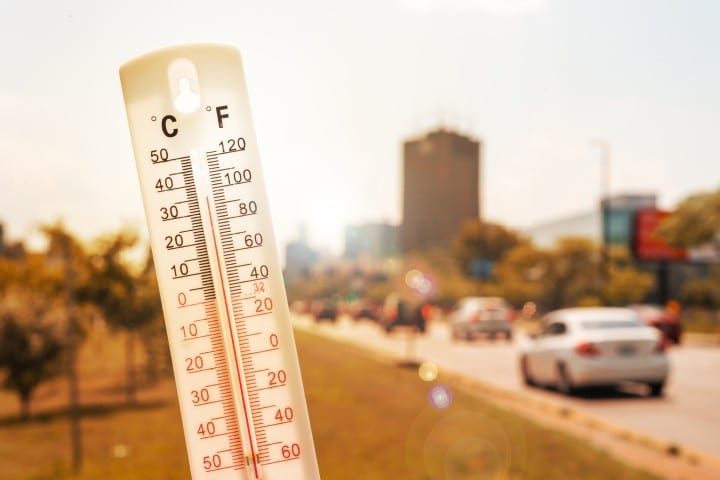
According to the National Oceanic and Atmospheric Administration (NOAA), July of 2021 — just last month — was “the world’s hottest month ever recorded.” That startling claim is based on global data released by NOAA’s National Centers for Environmental Information.
The most recent “hottest month ever” claim comes on the heels of the latest United Nations Intergovernmental Panel on Climate Change assessment, which UN Secretary General António Guterres called a “code red” for humanity.
“In this case, first place is the worst place to be,” said NOAA Administrator Rick Spinrad. “July is typically the world’s warmest month of the year, but July 2021 outdid itself as the hottest July and month ever recorded. This new record adds to the disturbing and disruptive path that climate change has set for the globe.”
NOAA stated, “The combined land and ocean-surface temperature was 1.67 degrees F (0.93 of a degree C) above the 20th-century average of 60.4 degrees F (15.8 degrees C), making it the hottest July since records began 142 years ago. It was 0.02 of a degree F (0.01 of a degree C) higher than the previous record set in July 2016, which was then tied in 2019 and 2020.”
The heat was worst in the Northern Hemisphere: “The land-surface only temperature was the highest ever recorded for July, at an unprecedented 2.77 degrees F (1.54 degrees C) above average, surpassing the previous record set in 2012.”
Many regional records were either broken or came close to being broken last month. “Asia had its hottest July on record, besting the previous record set in 2010; Europe had its second-hottest July on record — tying with July 2010 and trailing behind July 2018; and North America, South America, Africa and Oceania all had a top-10 warmest July.”
And like a good climate alarmist, Spinrad cited the latest IPCC assessment in a statement designed to increase fear levels.
“Scientists from across the globe delivered the most up-to-date assessment of the ways in which the climate is changing,” Spinrad said in a statement. “It is a sobering IPCC report that finds that human influence is, unequivocally, causing climate change, and it confirms the impacts are widespread and rapidly intensifying.”
It all sounds very frightening, and it might be if you simply took the word of the climate alarmist scientist Rick Spinrad. But there’s a whole lot of wiggle room in the term “ever recorded.”
We’ve only truly been able to assess global average temperature since the advent of the satellite age — and even current assessments are far from perfect. Prior to then, meteorologists were dependent upon weather reporters — humans who may or may not have known how to measure temperature reliably. Prior to 1900, the entire Southern Hemisphere was almost completely devoid of such weather reporters.
So much of the historical data that NOAA relies upon comes from what it refers to as “proxy data.” As NOAA itself explains, “These proxy data are preserved physical characteristics of the environment that can stand in for direct measurements.”
In lieu of actual temperature data, NOAA explains, “Paleoclimatologists gather proxy data from natural recorders of climate variability such as tree rings, ice cores, fossil pollen, ocean sediments, corals and historical data.”
All of that information can give researchers an idea of what the climate was like in 1880, for instance, but one thing it cannot give is an actual temperature record. Researchers can make an educated guess as to what air temperatures may have been, but there’s a term that scientists use for educated guesses.
They’re referred to as guesses.
As for global temperature records, the United States is the gold standard of national temperature recording, with relatively reliable temperature records of the lower 48 states going back to the mid 1800s.
In the United States, 2021 was definitely warm — but nowhere near the warmest on record. The decade of the 1930s gave us an actual climate-related disaster — the Dust Bowl. Years of drought combined with high temperatures and poor farming methods literally caused a mass of “climate refugees” to flee states such as Oklahoma for more well-fed areas such as California. John Steinbeck’s ode to communism The Grapes of Wrath was written about this time.
In July of 1936, state records for heat were set all over the United States. On July 18, Fredonia, Kansas, recorded a temperature of 121 degrees Fahrenheit. On July 10 of that year, Cumberland and Frederick, Maryland, both recorded temperatures of 109 degrees F. Wisconsin Dells, Wisconsin, recorded 114 degrees F on July 13 of that year. On July 6, Steele, North Dakota, reported a temperature of 121 degrees F.
Was 2021 really hotter than that?



